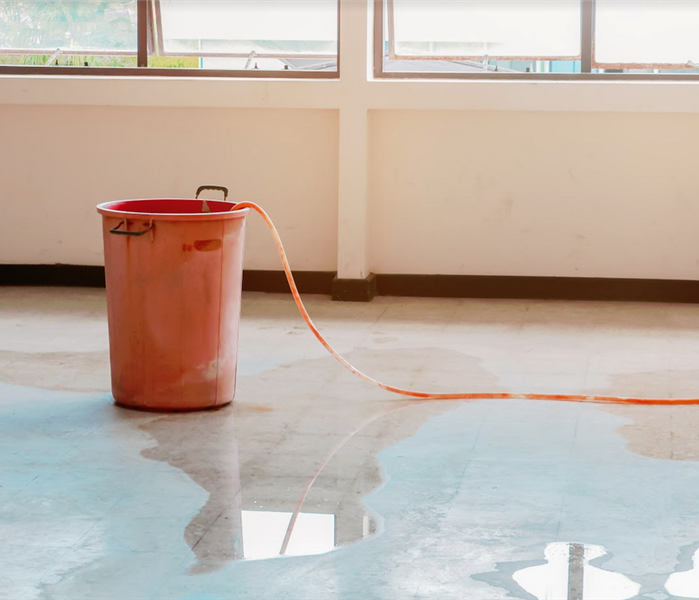How Do I Get Flood Water Out of My Dallas Home?
9/6/2020 (Permalink)
 Flood water can be hard to remove from your home after damage. Contact SERVPRO for 24/7 professional remediation and mitigation services.
Flood water can be hard to remove from your home after damage. Contact SERVPRO for 24/7 professional remediation and mitigation services.
SERVPRO techs know you cannot remove flood water from your Dallas home without professional equipment for the best outcome
Big D is no stranger to wild weather, and anyone that has lived in Dallas Texas knows you can have tornadoes, flash floods, and then sunshine and rainbows all in one day. Cleaning up your property after flood water enters can be daunting. In many cases, the water enters the home and recedes just as rapidly as it came in. This presents the challenge of not only extracting and drying the property but locating all areas of water migration to ensure no water damage gets left behind.
Do I Have to Wait Until the Water Recedes to Order Flood Water Removal?
Once the need for flood water removal arises in your Dallas home, it is crucial to the ball rolling on cleanup and restoration as soon as possible. The reason is the longer the building materials in your home have exposure to excessive moisture conditions, the less of a chance of full recovery through restoration techniques. Extreme damage from flooding in your home can lead to:
- The need for removal of sheetrock from walls and ceilings
- Strong, musty water odors
- Formation of mold
- Ruined flooring and subfloor
- Water in the crawlspace
How Does SERVPRO Locate Water in My Home?
One hundred percent of the floodwater in your Dallas Home cannot get identified through visuals only. SERVPRO technicians have numerous types of moisture detection equipment.
Moisture Sensors are ideal for detecting hidden moisture in carpets and padding. The sharp probes on this device go quickly through the carpet backing into the pad and determine if the subfloor underneath has seepage. While it does not measure the amount, this device is an indicator of whether or not the carpet requires extraction and drying.
During the initial scoping of the property, SERVPRO techs are often seen using thermal imaging cameras, sometimes referred to as infrared or thermography). This type of equipment does not actually find moisture but instead displays temperature differences. Residual water tends to show at a different temperature than the surrounding materials, and this reading is a good indication for if other extractor or drying measures need to get taken. More benefits of using thermal imaging include:
- They are an excellent way to determine if a structure is thoroughly dry
- This equipment uses both evaporation and thermal capacitance to locate moisture
- The ability to inspect for water retention in challenging to reach areas
While it does not allow the technicians to "see" behind walls or under floors, it assists in alerting them to the presence of the moisture. Certain factors can result in false readings such as sunlight and shadows, electric heat, and indoor air conditioning. SERVPRO techs have specific methods for ruling out false readings to ensure they are on the trail of migrated water every time.
During the cleanup of floodwater in a home, the use of moisture meters is beneficial. Most of these meters have scales for both wood and non-wood materials. Some of these hand-held units take measures through the use of radio frequencies while others use penetrating probes. Both methods are accurate ways to determine moisture content on-site.
How Can I Dry My Home After a Flood?
A big mistake many homeowners make after a flood hits their property is to blot up as much water as they can with mops and rags and then set up fans. At best, these dry surfaces but nothing about the water that may have migrated under flooring, behind baseboards, and other areas. And this type of drying does nothing to reduce the interior humidity levels by continually circulating moist air.
The drying equipment that the SERVPRO team brings on-site delivers airflow at such high velocity that any embedded moisture left behind after the extraction phase begins to rise. This effect hurries the drying process along because the techs set up industrial dehumidification equipment to capture the water vapor and port it off-site.
It is not unusual for the floor coverings such as tile and carpet to require removal to dry the slab or subfloor underneath. When needed, the technicians have specific drying equipment such as drying mats to force the warm, dry air directly into the floor. Other frequently seen applications include "tenting," usually used to dry a smaller scale area of water damage. The techs place plastic over the wet spot and direct the air movers in, and the dehumidifier pulls moisture out.
When you need fast and efficient flood water removal, contact SERVPRO of Southeast Dallas County at (972) 227-0800. The trained technicians have decades of experience cleaning up and restoring homes from all types of water damage.






 24/7 Emergency Service
24/7 Emergency Service